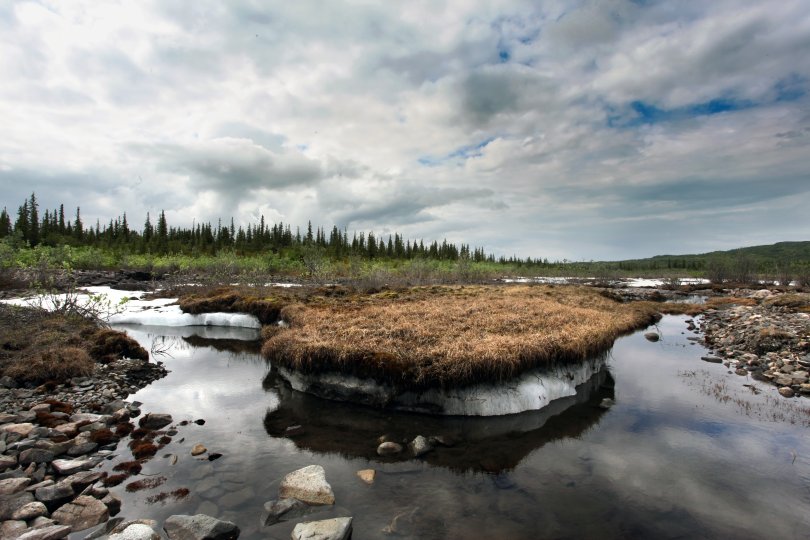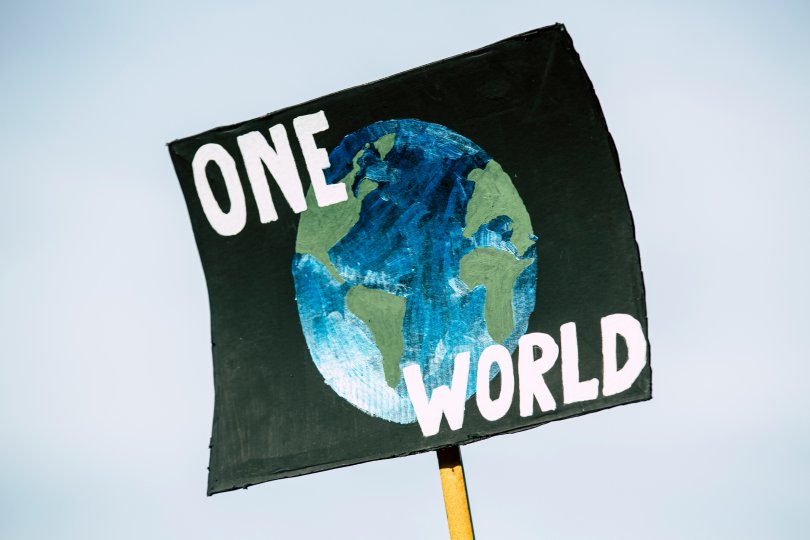
Health and environment
At a time when "carbon neutrality" is the central theme of international climate conferences, a team of economists is studying ways that could make this goal a reality.
In 2015, 196 stakeholders committed to fighting global warming through the Paris Agreement. Two carbon neutrality objectives were defined: zero net CO2 emissions, and an increase in the average global temperature of less than 2°C by 2100 compared with the pre-industrial era.
In 2023, the average annual global temperature rose by 1.2°C, and the Intergovernmental Panel on Climate Change (IPCC) predicts a possible increase of up to 5°C by 2100. A disaster scenario for the planet and its inhabitants. According to the IPCC, to limit global warming to 1.5°C, we need to cut emissions today and reduce them by almost 43% by 2030.
In their study "How Can Technology Significantly Contribute to Climate Change Mitigation ?" published in July 2023 in the journal Applied Economics, researchers Claire Alestra, Gilbert Cette, Valérie Chouard and Rémy Lecat examined the parameters that would enable these objectives to be achieved. Using the scenario simulation tool that they built (Advanced Climate Change Long-term model or "ACCL"), they have obtained results that encourage the introduction of ambitious environmental policies.
The results of their study conclude that in order to achieve the IPCC's climate objectives, four strategic levers need to be activated immediately throughout the world : the introduction of a carbon tax on 'dirty' energies (coal, oil, gas and electricity that emit CO2), and the development of green technologies to reduce energy consumption, capture CO2 and develop renewable energies. This scenario needs to be qualified, since in practice the combination of these four tools depends on the resources and context of each country.
The ACCL simulation tool can be used to study the relationship between Gross Domestic Product (GDP) and its various economic components, energy consumption (emitting or non-emitting) and climate-related variables (CO2 emissions and stock, temperature rise and damage). In this way, it can simulate climate policy measures such as increasing the price of fossil fuels through a carbon tax, or reducing the price of 'clean' energies by encouraging innovation with subsidies.
A previous study by the same authors showed that if countries were to continue unchanged, in a scenario known as "business as usual", the temperature would rise by +5°C by 2100, with considerable damage to the climate. These results are probably optimistic, as they do not take into account all the possible consequences, such as the worsening of extreme climatic events, like floods and cyclones, or the effects of climate runaway, with irreversible "points of no return" being reached, like the melting of the Arctic permafrost, releasing considerable quantities of greenhouse gases.

Permafrost, Alaska ©Alexander/AdobeStock
In a scenario where countries only apply a carbon tax, it would have to be introduced at the same time for all players, with a tax threshold for fossil fuels of at least +3% per year, to curb global warming. On the 1st October 2021, only 47 jurisdictions, representing 60 % of global GDP, had a carbon price (tax or quota market) according to the Institute for Climate Economics (I4CE). Intervening solely via energy prices would require international coordination measures and an increase in the price of polluting energies, which seems unrealistic.
The researchers then studied the effect of lower, albeit still significant, taxation combined with the use of green technologies. This scenario takes into account technological innovation, as well as the dissemination and deployment of existing technologies (building renovation, democratisation of renewable energies, more efficient batteries, etc.). The carbon tax is crucial because it can help finance these technologies, but above all because it provides an incentive to invest in these sectors.
Simulations show that the scenario that combines low taxation with an increase in the price of 'dirty' energy of only 1% per year and 'usual' technical progress, i.e. innovations in smartphones, the internet, etc., leads to a temperature rise of 3.5°C by 2100 and climate damage estimated at 5% of global GDP. Adding the use of green technologies to non-green technologies, and combining them with a 1.5% annual increase in the price of dirty energy, would still not lead to compliance with the carbon neutrality targets. Only the scenario of purely "clean" technical progress and taxation of 1.5% per year achieves carbon neutrality and keeps global warming below 1.5°C by 2100. All the results can be read parameter by parameter and country by country on the ACCL website.
There are three types of green technology: those that reduce energy consumption per unit of GDP, which corresponds to an increase in energy efficiency; those that capture, use and store CO2 at emission or in the atmosphere; and those that produce energy with very low CO2 emissions (renewable energies).
According to the ACCL model, none of the three green technologies is sufficient to achieve the climate change objectives independently of the others. In other words, there is no one single miracle technology that can save us from climate change, and they all must be mobilised.
Improving energy efficiency is one of the main ways of reducing greenhouse gas emissions, through the renovation of housing, transport and industry. In France, for example, the building sector is the second largest emitter of greenhouse gases. In energy economics, the rebound effect or "Jevons paradox" is often cited as a limitation. In 1865, the economist William Stanley Jevons noted that global coal consumption had risen sharply following the invention of James Watt's steam engine, even though it consumed less coal than its predecessor. This improvement in energy efficiency and the subsequent gains in profitability led to an increase in total resource consumption, rather than a decrease. A theory that could be applied to energy resources in the case of improved energy efficiency, and therefore a reduction in price, which would create new needs.

© Jas Min / Unsplash
Another so-called "green" technology is the capture, storage and use of CO2. This is called carbon sequestration, which involves separating CO2 from other gases. It can be captured at the source of emissions, for example within an industrial complex, or directly in the air. Carbon dioxide can be reused in steelworks, cement works and oil extraction, or stored elsewhere, for example under the ocean. In 1996, Equinor, Norway's national oil and gas company, made it possible to store the CO2 from the gas extracted from the Sleipner field directly in a pocket under the seabed. In the case of Sleipner, 22 million tonnes of carbon dioxide were sequestered, inspiring several hundred other projects around the world. Nearly thirty years later, the results of this project, which is often held up as an example, are mixed, according to a report in June 2023 from the Institute for Energy Economics and Financial Analysis (IEEFA) .The price and energy cost of the installations, and the difficulty and danger of storage have all been called into question. As for aerial capture, projects are still at the prototype stage and are less effective. The cost of capturing and storing a tonne of carbon dioxide is around six hundred dollars, compared with around twenty dollars for storage at Sleipner.
Green technologies also include energy sources that do not emit CO2 when they are used, such as solar, wind, hydro and even nuclear power, even if it is a source of other types of pollution. They take into account innovations, but also the spread of renewable energies that already exist on a larger scale. Given the falling production costs of renewable energies, this is a likely assumption. Over the last 15 years, the production cost of onshore wind power has fallen by 69% and that of photovoltaic solar power by 89%. Certain sectors could thus be electrified and subsidies could be allocated to renewable energies. However, better ways of storing and producing these energies still need to be devised, taking into account the thorny problem of intermittent sun and wind flows.
Heat waves, loss of biodiversity, agricultural risks: the effects of climate change are already widely visible. According to the researchers, measures must be put in place immediately to avoid very costly runaway effects, such as the melting of permafrost, ocean acidification, tropical rains, the disappearance of coral reefs or forests that capture CO2. However, a short-term view of the costs to be borne today and their social acceptability is slowing down political decisions. Private and public financial flows that are not aligned with the Paris Agreement still account for the vast majority, with $870 billion identified in 2020 in support of fossil fuels, i.e. far more than the finance dedicated to climate. According to the latest IPCC report, it would take 3 to 6 times the current investment to combat climate change.

©Markus Spiske / Unsplash
According to one of the simulations carried out, if all countries except the United States were included, the results would be good, but not optimal. This is the paradox of the stowaway: wishing for collective change without having an interest in doing so individually, because each country benefits from the climate policies undertaken by others while sharing with these other countries the favourable effects of the climate policies that it undertakes and finances itself. On the other hand, if India, one of the countries most negatively impacted by global warming, is the only country in the world to implement climate policies, the results would prove catastrophic. While India and the United States are among the biggest producers of greenhouse gases today, since 1850 the United States has produced a cumulative total of 841 million tonnes of CO2, compared with just 155 million tonnes for India.
According to the IPCC, 10% of households account for 40% of global greenhouse gas emissions. These figures raise the question of the transfer of technology and funding from polluting countries to less wealthy countries, a theme that is increasingly present at international summits and in academic research.